The Moot will have something for you – be that firesteels, bowdrills, handrills, pumpdrills, bamboo fire saws or the secret art of lighting fire from damp tinder
Many many years ago I stumbled upon a website called Bushcraft UK and realised that there were many folk out there just like me, struggling to get to grips with all the different ways of making fire.
The results on the site only took me so far so I was even happier when I spotted a thread on the Bushmoot. This was the second Bushmoot way back in 2005.
Since then I have discovered many different ways of making fire when out and about. This post is about just some of the ways we make fire at the BCUK Bushmoot.
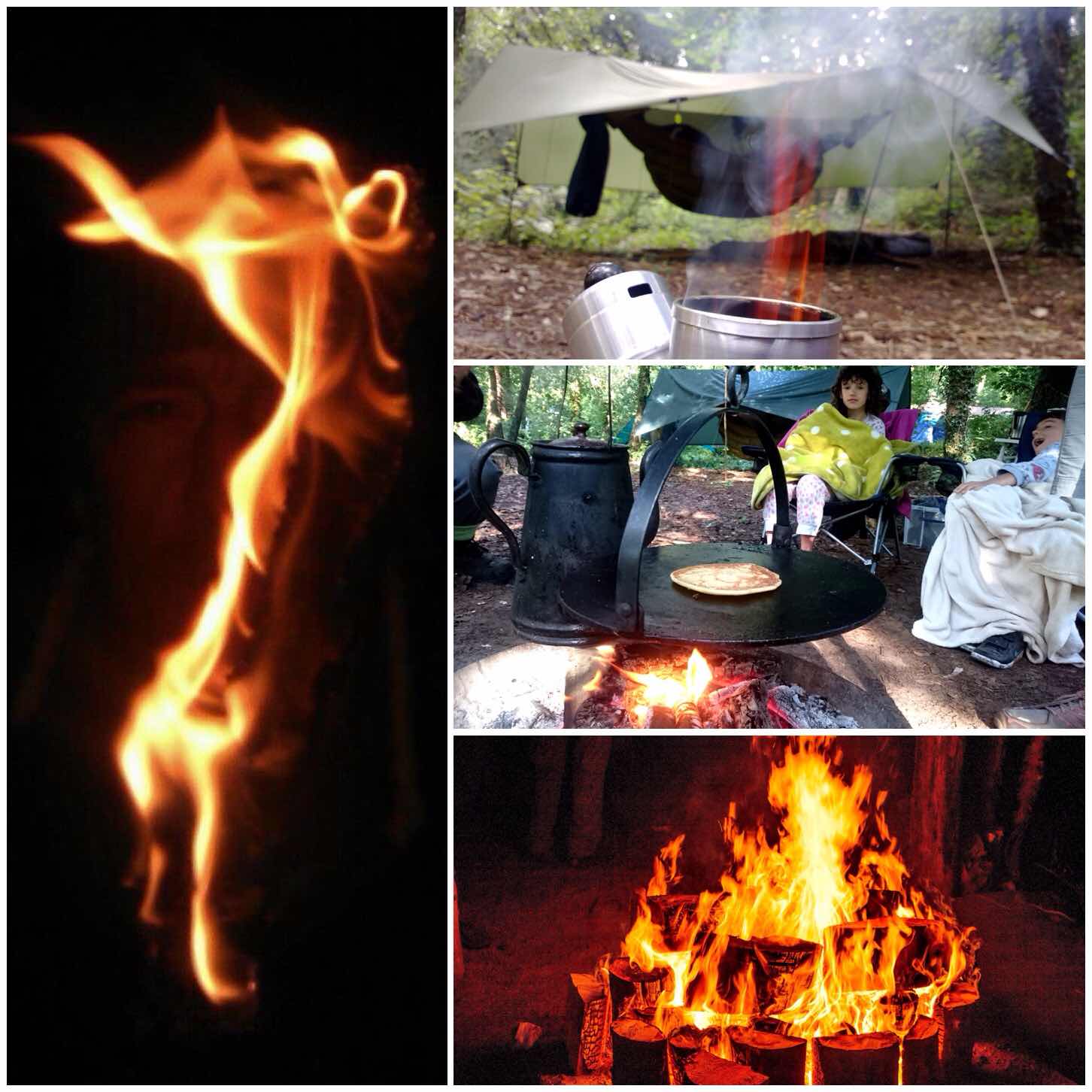
Firesteels
One of the most common methods a bushcrafter will use to light a fire is a Firesteel, so there are plenty of people willing to share with you how they use theirs and explain what tinders they use.
We have included the use of Firesteels into our ‘Starter Course‘ at the Moot. They are easy to use and the kids love them. When teaching very young kids (pre school) I liken them to creating Fairy lights and this seems to catch the children’s imagination.
The first person to teach me to use a Firesteel properly at the Moot was Kevin Warrington (Laplander’s Natural Lore Blog) and after I attended his bowdrill class he asked me to come back and assist him with fire-making the next year. We have been good friends ever since and I have to thank Kevin for getting me started on the road to instructing others in the world of bushcraft.
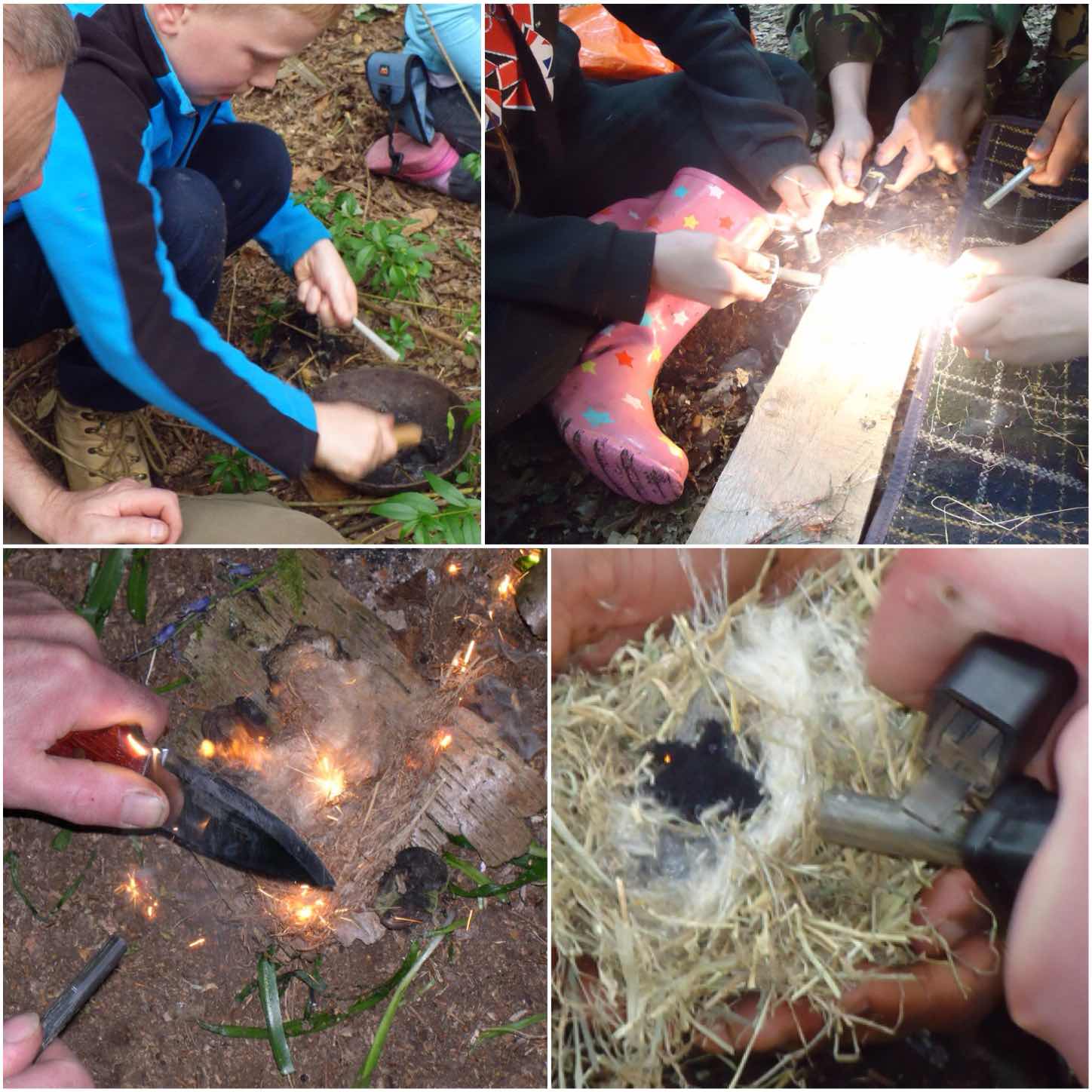
The Starter Course
The Starter course at the Moot is not just about lighting a fire, it is also about making anyone preparing and maintaining a fire, and just as importantly it is about putting a fire out safely.
It is great to see a whole family come together to learn how to work as a team to get all the resources they need for their fire and to coax that initial burst of heat into a well-established fire.
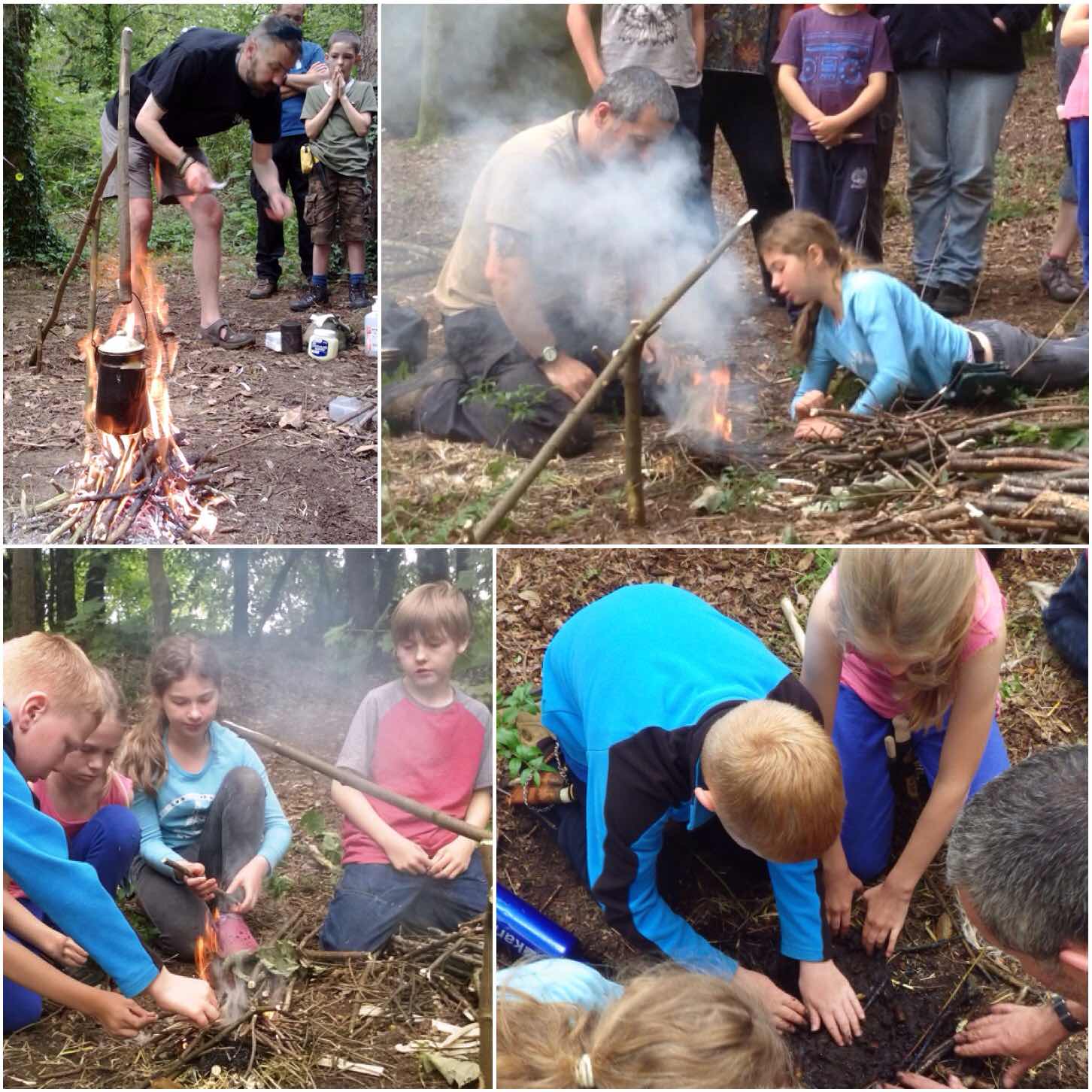
Pump Drills
From time to time some of the instructors will bring along some of their pump drills or other similar training aids. The pump drills prove a great hit with all the kids and once they get the hang of the system they soon have them spinning madly away as they attempt to produce some smoke.
These drills were supplied a couple of years ago by Perry McGee of the National Tracking School.
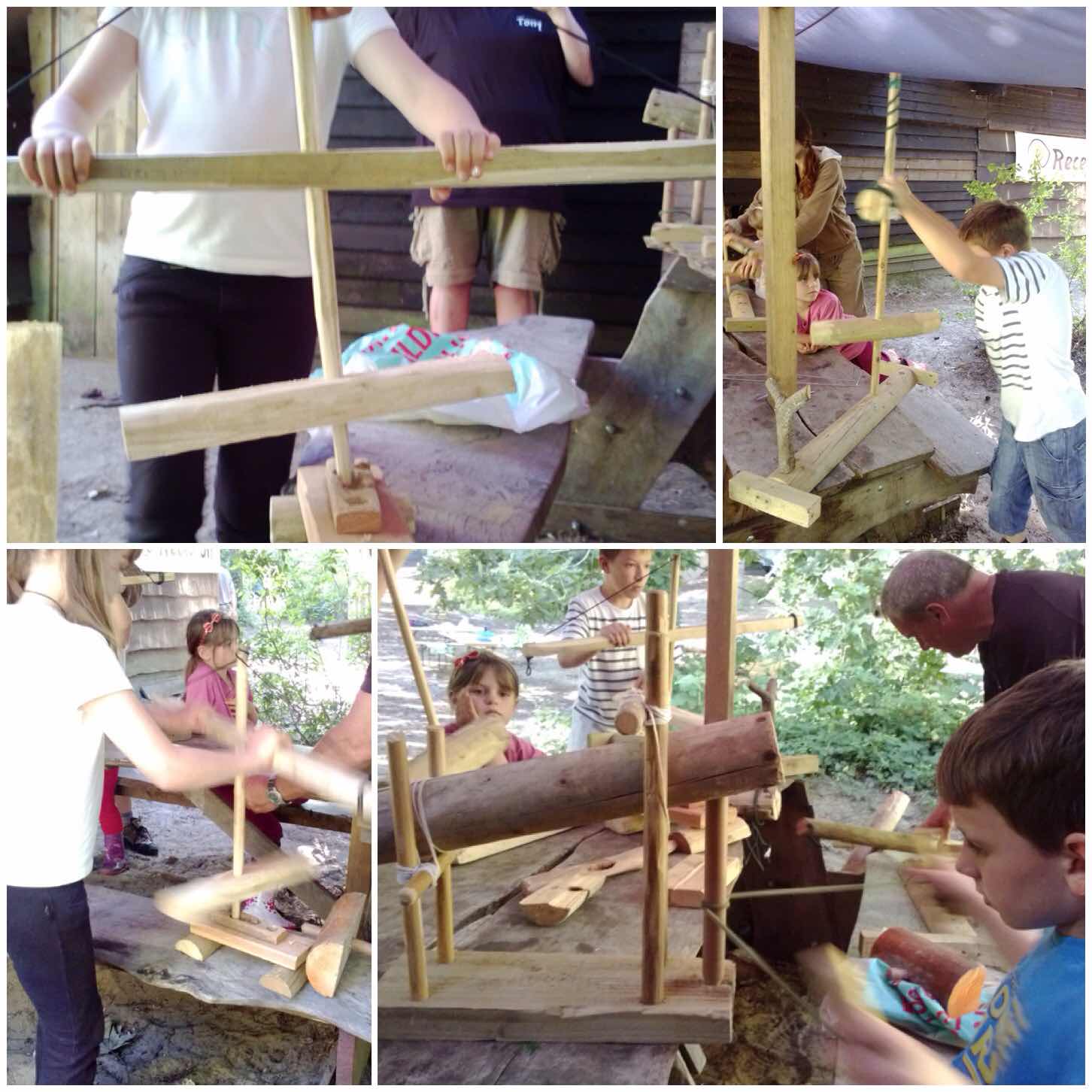
Bowdrill
A favourite of mine over the years has to be the bowdrill. I have lost count of the number of people I have helped master this skill at the Moot. One of the reasons I love teaching this skill is that there are so many factors to take into account when bowing you can easily lose a whole day when teaching it.
Recently a number of other instructors like Mark Oriel have stepped forward to teach this skill enabling me to focus on other areas to develop myself.
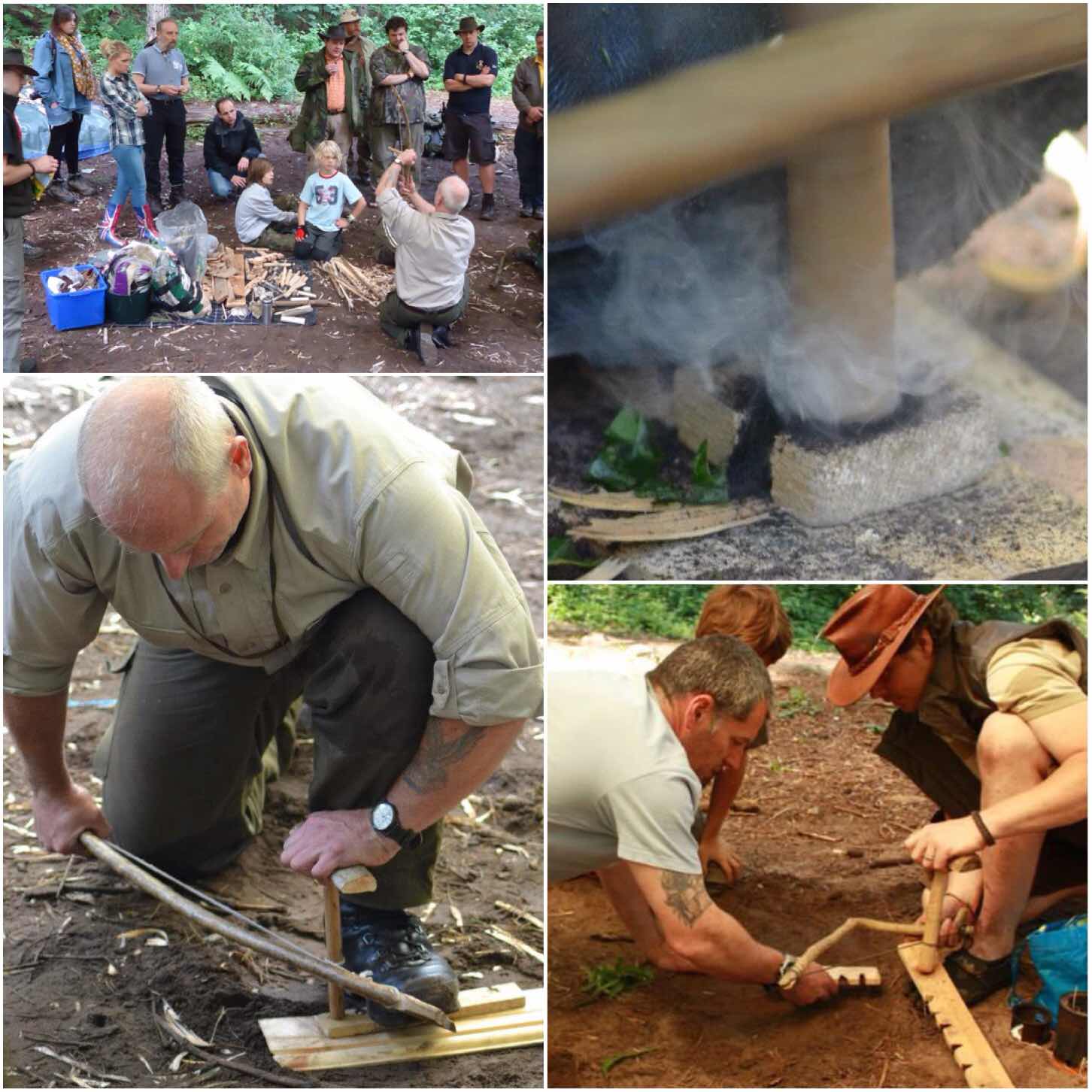
Bowdrill Methods
While teaching bowdrill I use two methods. One is with a single wrap of cord around the drill piece and the other is with multiple wraps (the Egyptian method).
The single wrap is easy to set up however it puts a lot of strain on the cord and if the drill and the bearing block become separated the drill piece tends to ping off to the side.
The Egyptian method relies on multiple wraps, it takes longer to set up and can be more difficult to control. It does though have the advantage of not putting so much strain on the cord and the drill does not ping off to the side when it becomes detached from the bearing block.
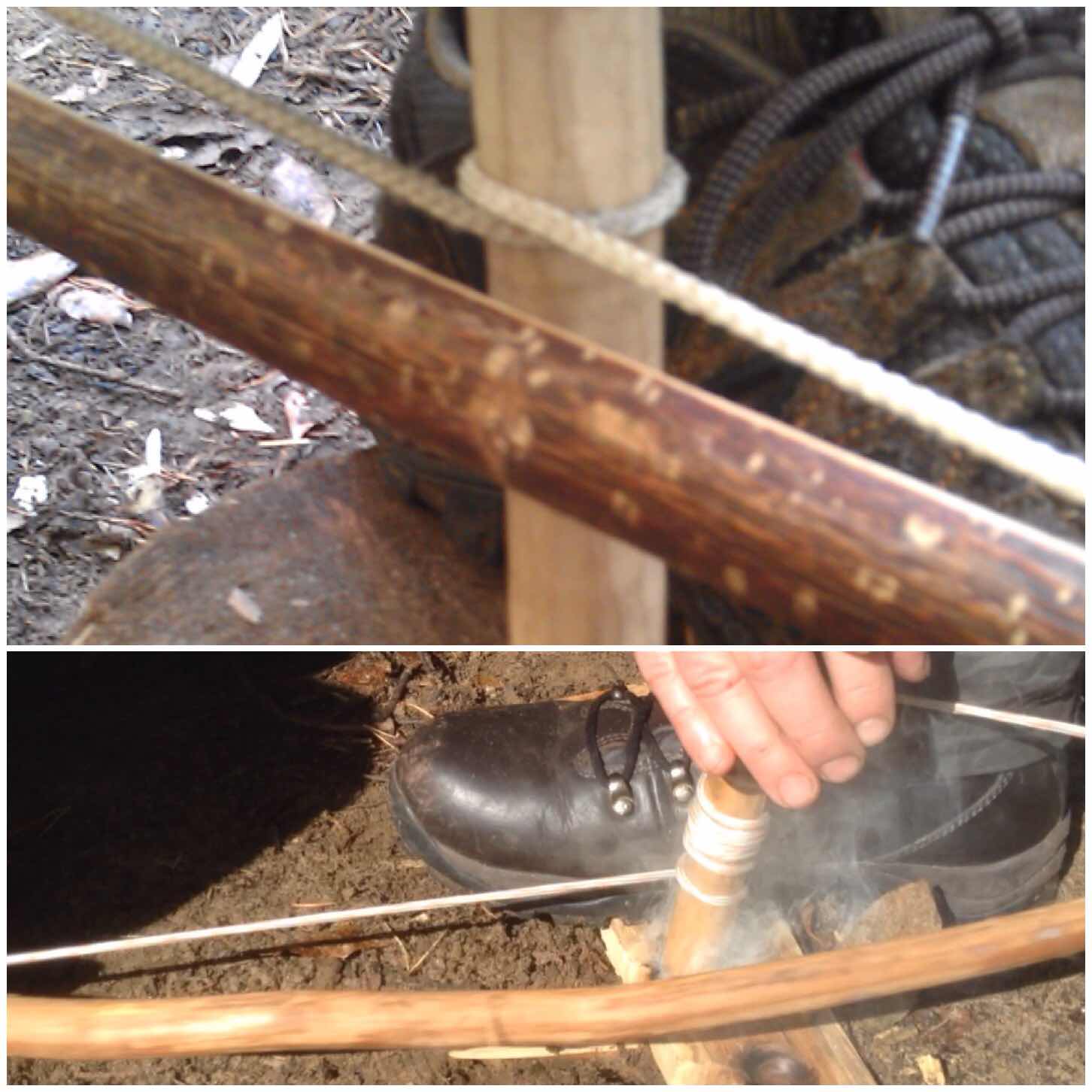
Here is the bowdrill in action using the single wrap method.
Group Bowdrills
As we get a lot of children at the Moot and from time to time someone carrying an injury you need to devise other strategies for bowdrilling. Historically I believe bowdrilling was a communal affair as it requires a lot less effort from individuals to get fire when they work together.
I set up Group Bowdrill sessions for families where a couple of people can hold a large bearing block in place and a couple of others can push the bow back and forth to generate the heat required (approx 425 degrees Celsius) to produce an ember. This method usually results in a massive ember, which increases the chance of getting a flame.
Another method is to use the large bearing block with the bowyer holding one end as a bearing block with the other end dug into the ground. In the bottom two pictures you can see that Dave is also using a ’round’ of wood to raise the hearthboard making the act of bowing easier.
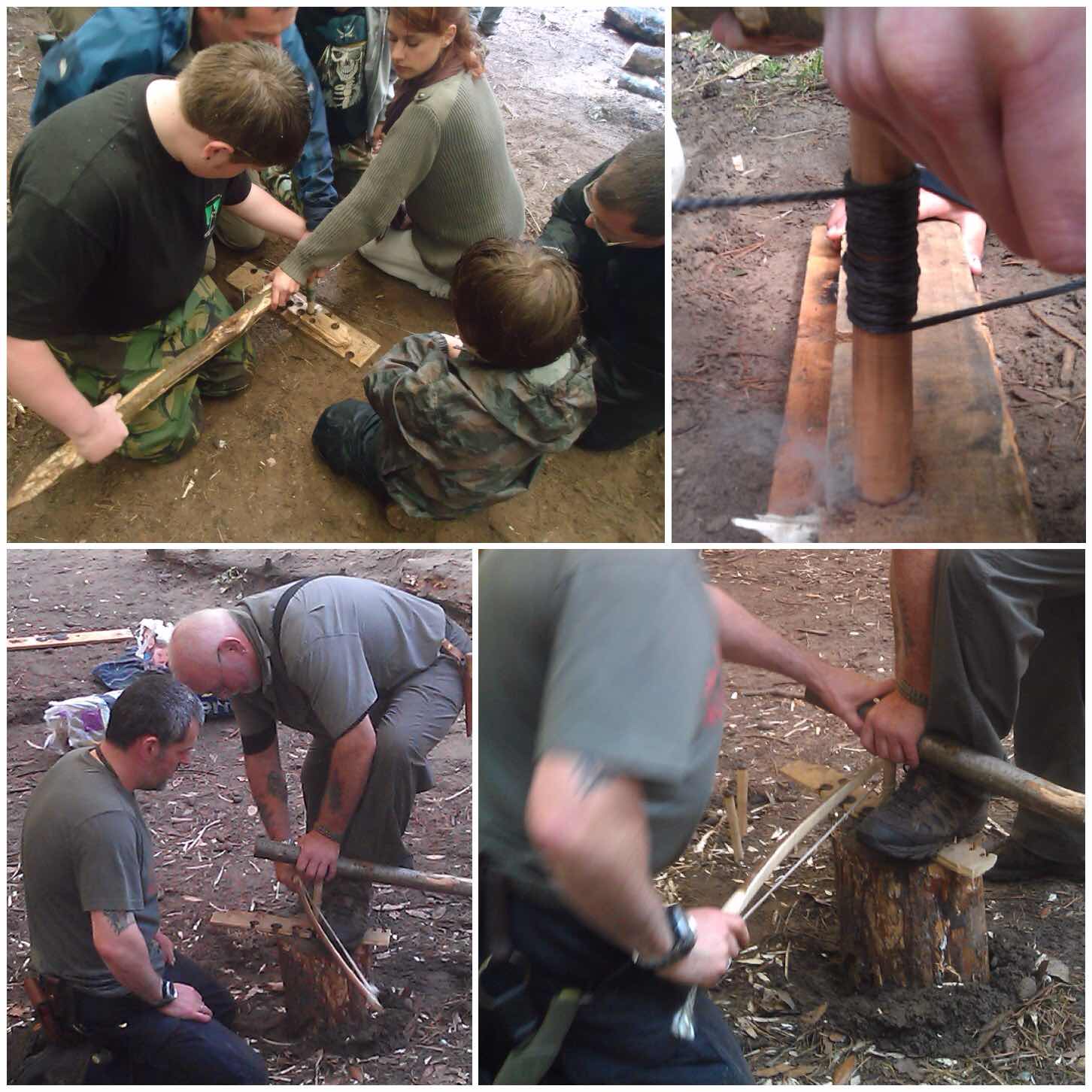
I made a short video of a bow in action with the Egyptian method at the Moot a couple of years ago. This was to show how easy it was to create an ember using this method with two people on the bow.
Handrills
A Master fire maker who has been coming to the moot for years now is Richard (Rich59 on BCUK) and what he doesn’t know about firemaking is not worth bothering about. He is an expert with the handrill and regularly brings along a range of woods such as Elder, Teasel, Buddlia, Mullein and Reedmace for students to try out.
Richard is a keen experimenter and will try out different techniques like attaching cord to the drill to see if that technique makes life easier for people.
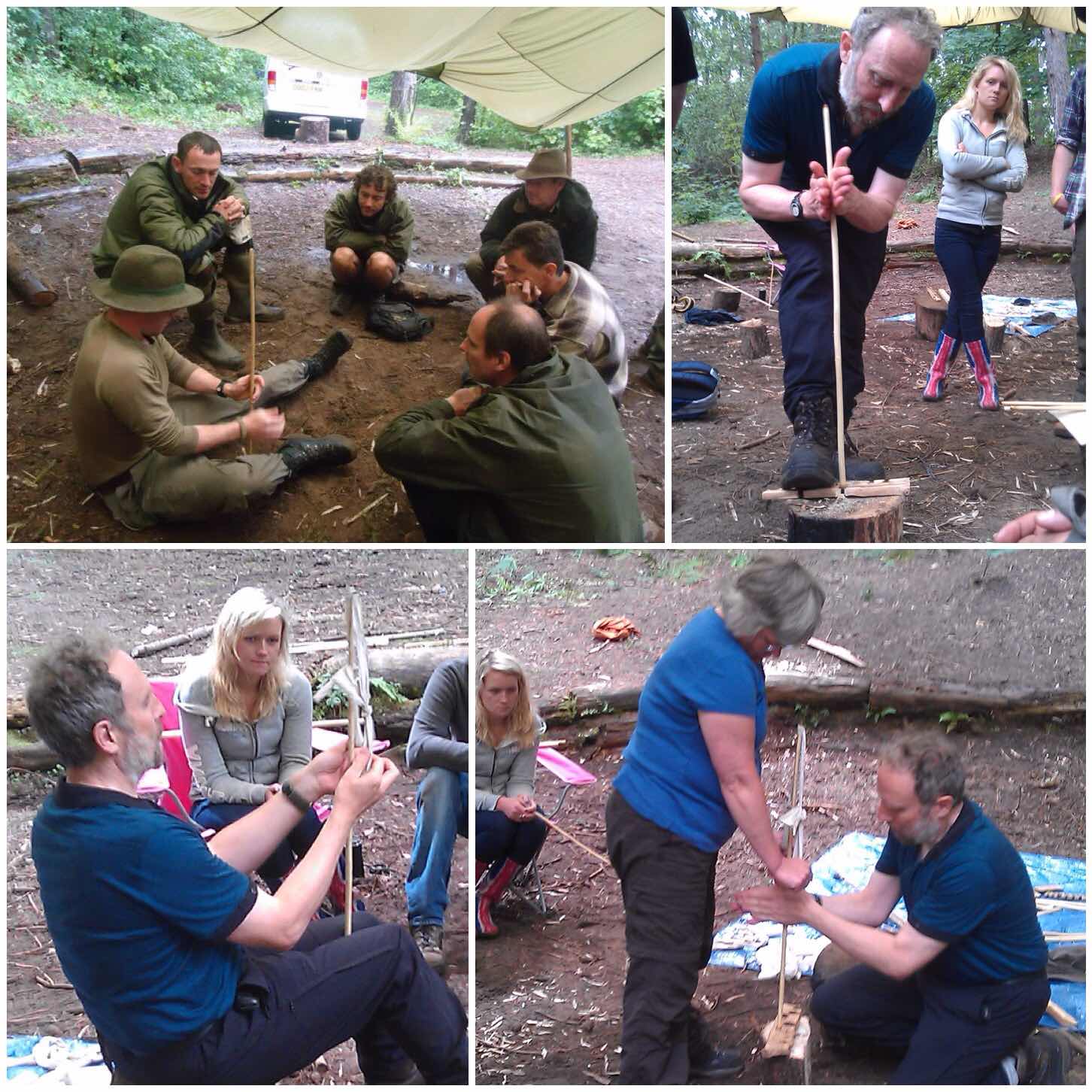
This is my short video on using a handrill.
Bamboo Firesaw
This year Richard experimented with Bamboo Fire Saws. He managed to get some spare bamboo from Wayne Jones of Forest Knights (Wayne was making Bhutenese bows) and we soon had a pile prepped up around our camp.
I did not get to see Richards class as I was running one myself but the reports were all positive with successful fires being made, Maybe next year I will make time to see his class.
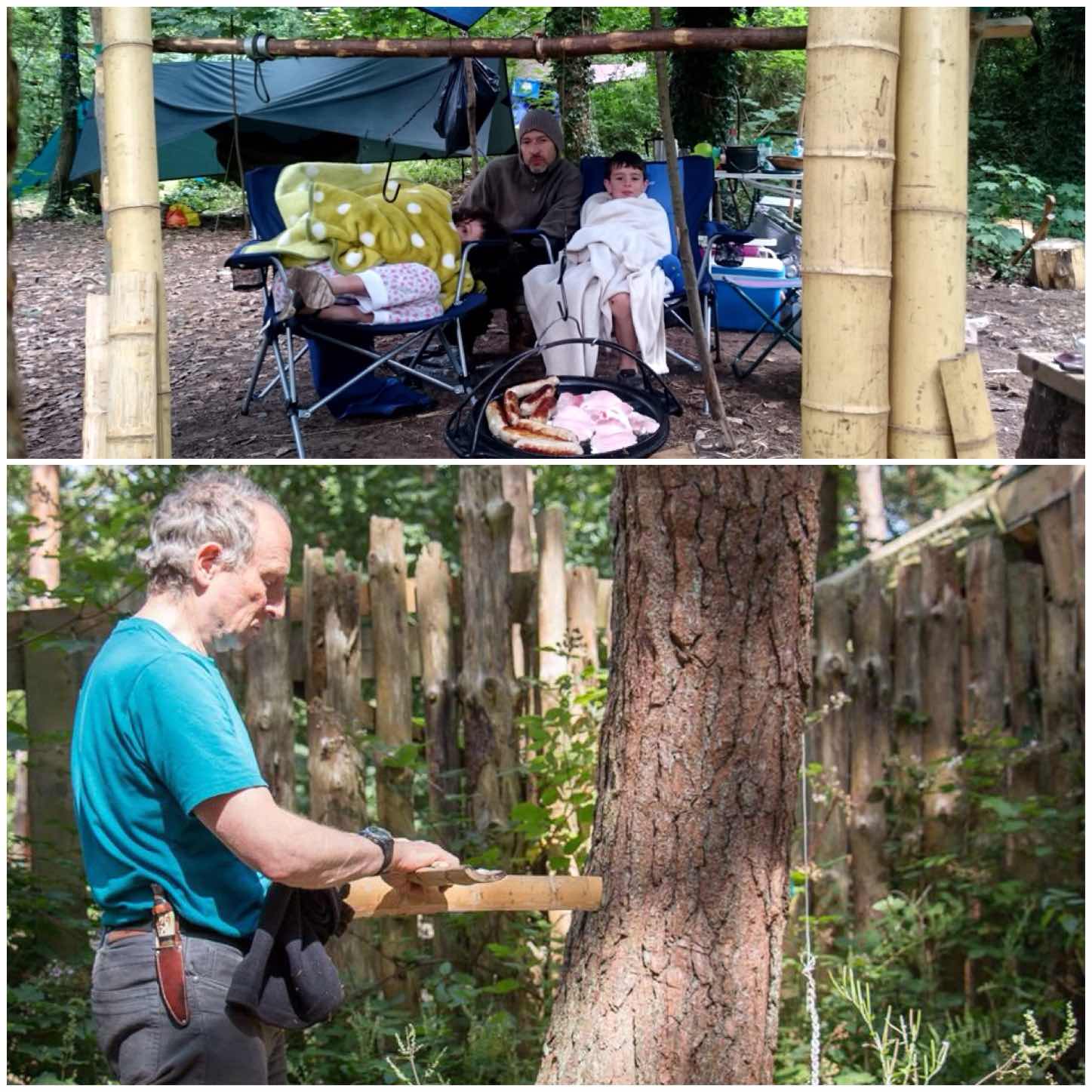
Dry Tinder
Once you have your ember created (however you do that) it is time to coax that very fragile bundle of hot dust into a fully formed ember and – with the use of whatever tinder you have at hand – to get that much sought-after flame.
It is at this stage that you can see students’ faces transform from concentration into sheer joy – one of the reasons why I love this subject.
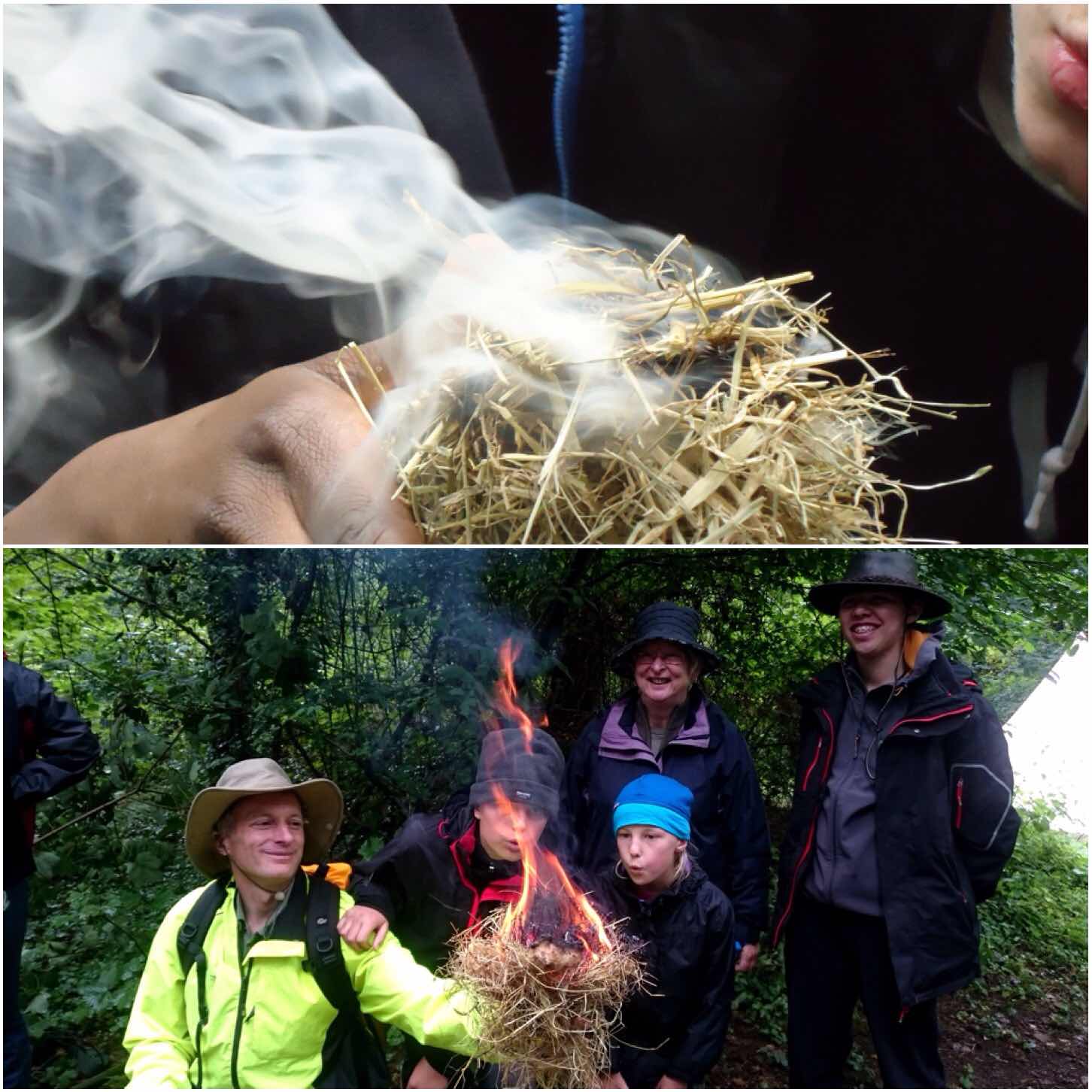
Damp Tinder
Normally you try and find the driest tinder possible to turn your ember into a flame, however Richard turned that idea upside down a few years ago. We had a chat one evening around the fire and he explained his idea to me: dimply that it was possible to walk off into the woods and pick up damp dead leaves and process them in a certain way to make tinder to start a fire.
After collecting a pile of damp leaves (take the driest ones from the top of the leaf debris) start to break them up by rubbing them vigorously. Collect the flaked pieces and grade them from minute up to piles of the skeletal remains of the leaves.
From this make a small pile wjth the finest flakes in the centre of your pile.
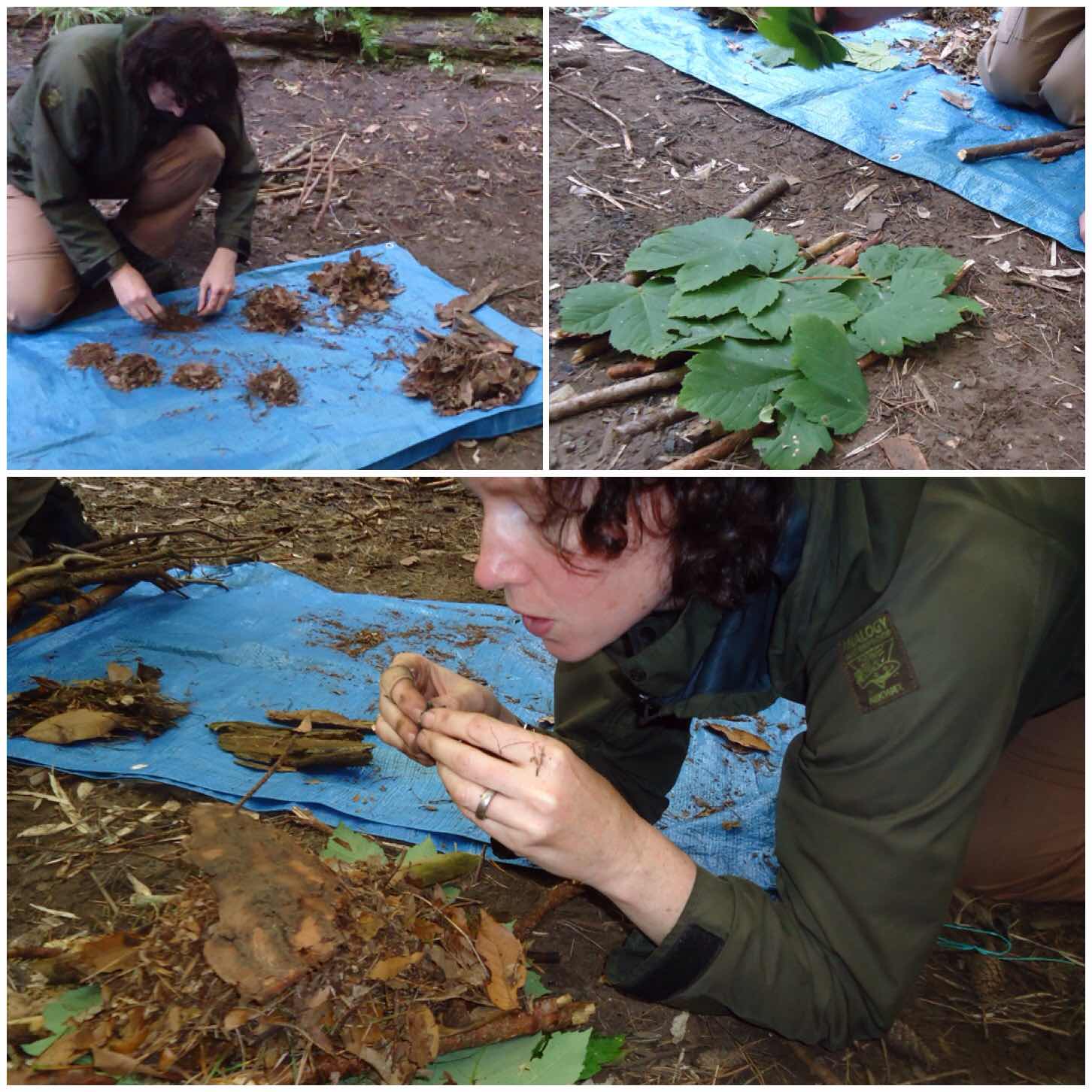
Make a small hole in the side of your pile to the centre and pop an ember (create that in whatever way you wish) and start to blow gently into the ember.
The trick is to do this slowly so that you create an ever-expanding dry area. If necessary you can place some green leaves or bark over the top to trap all the broken debris and stop it all blowing away. After about 10 to 20 minutes you usually get flame. Just shows you should always persevere with your fire.
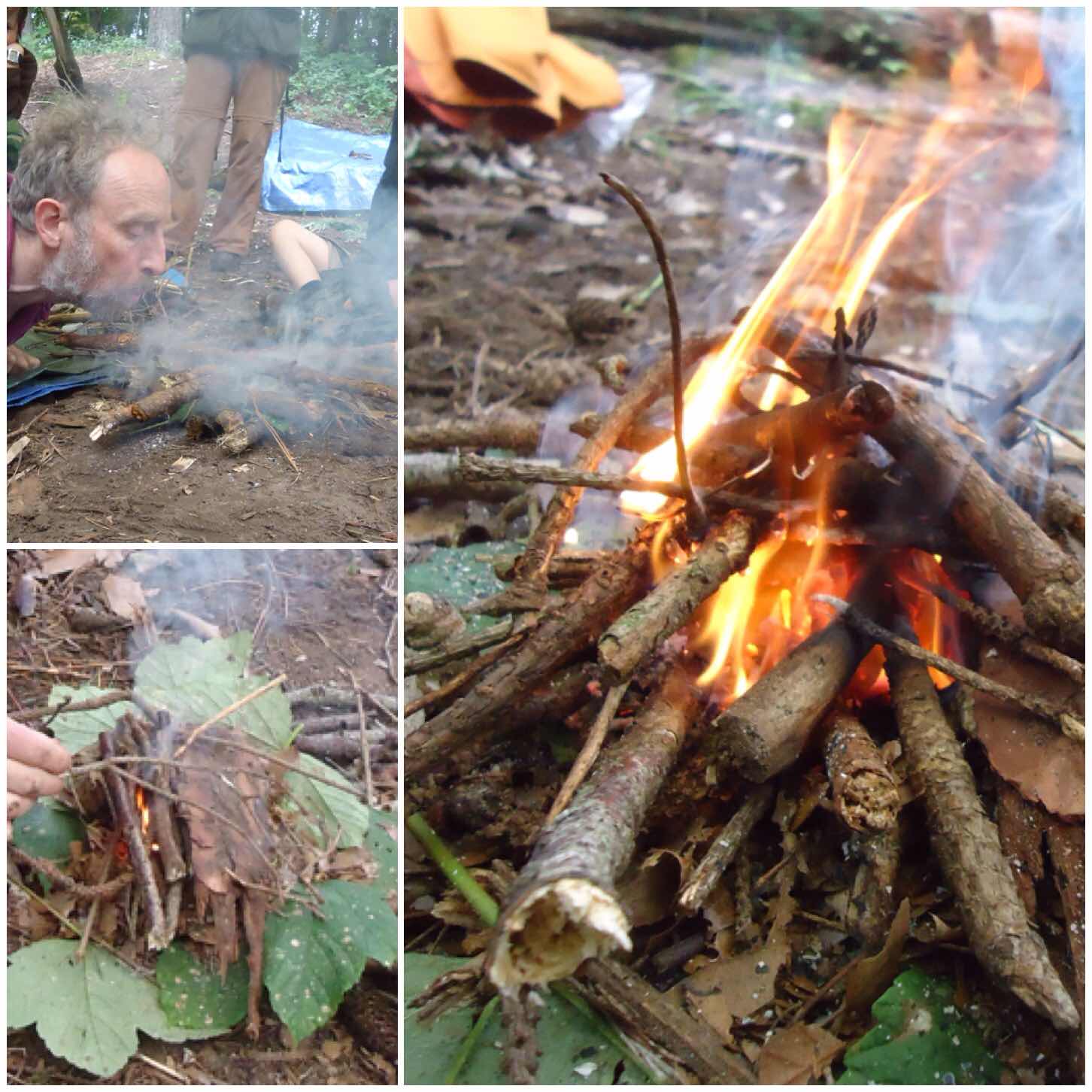
Challenging Yourself
Whether you are a novice to fire making or an expert looking for a new challenge the Moot will have something for you – be that firesteels, bowdrills, handrills, pumpdrills, bamboo fire saws or the secret art of lighting fire from damp tinder.
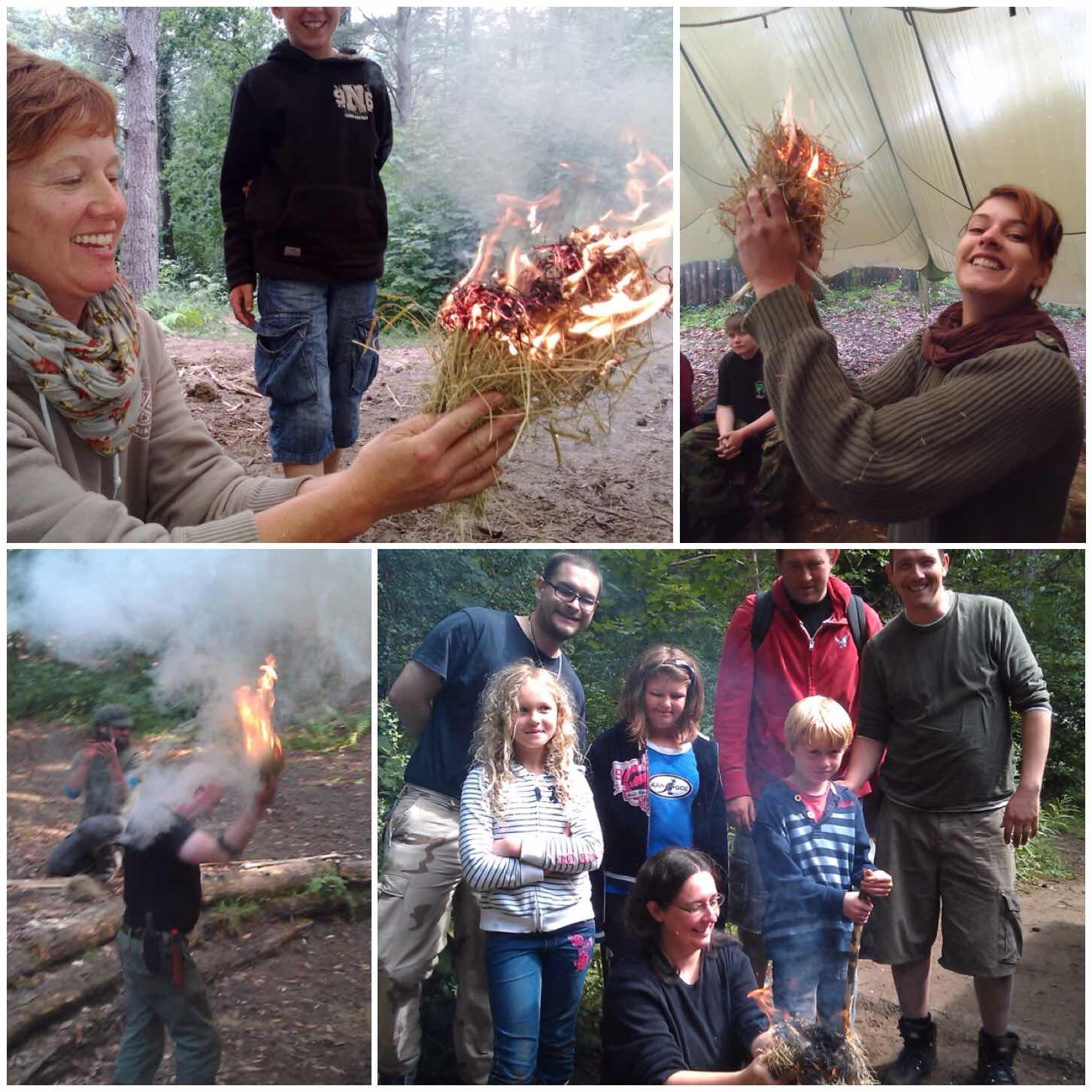
Cheers
George
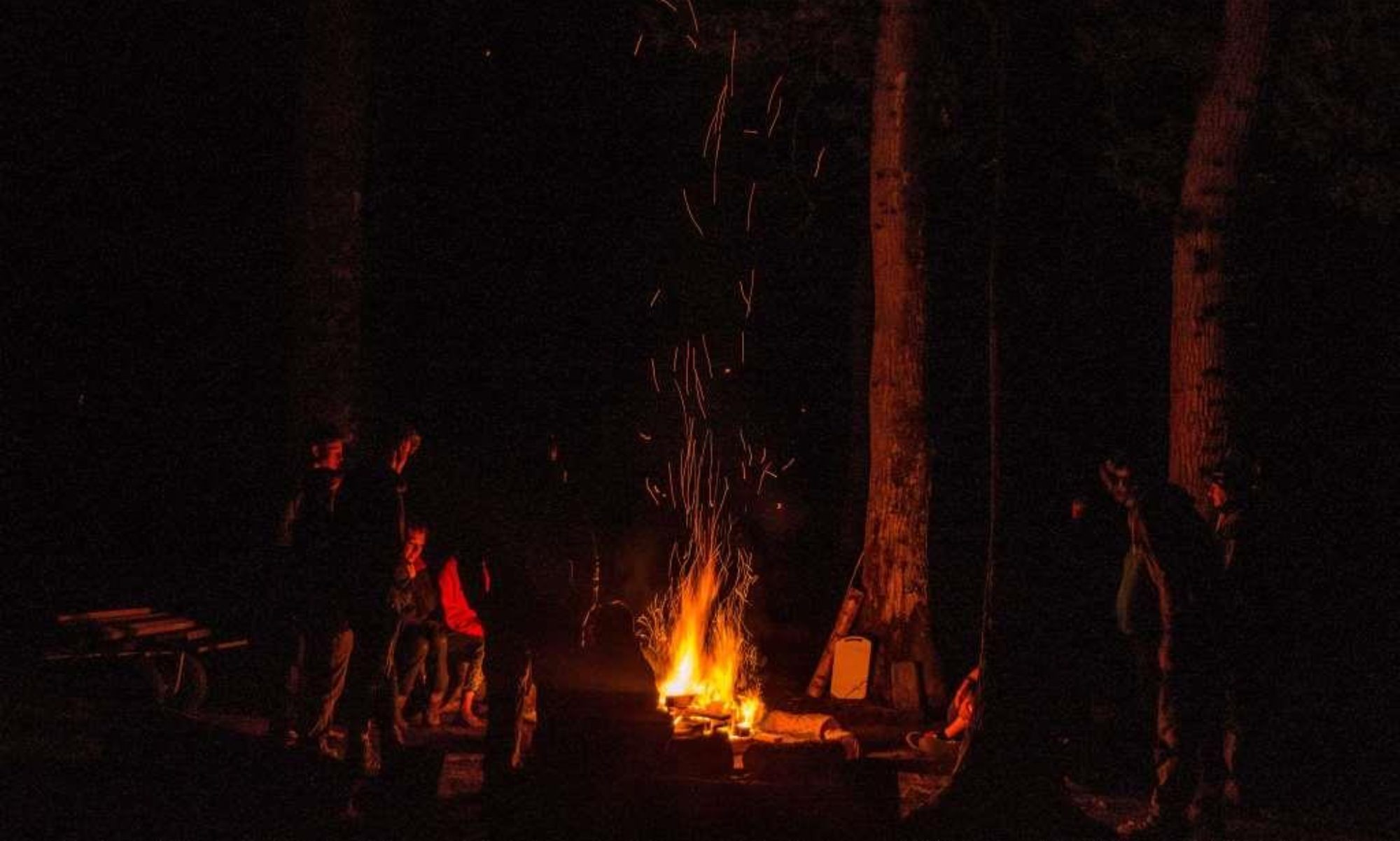
Fantastic, great post.